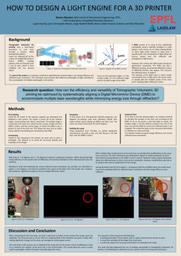When I first learned that my application to work with the Timothy Smith Network in Boston had been accepted I was overjoyed. TSN launches its Boston Design Academy program every summer, where 10 Laidlaw Scholars join the staff to teach high school students from underrepresented and disadvantaged neighborhoods of Boston about technology and practical applications. The goal of the BDA program is to bridge the digital divide and provide useful and eye-opening opportunities for the students.
My job in the BDA program was as an Assistant Instructor in the Elevating Agriculture Technology program, where I focused on teaching the 3D modeling part of the syllabus. My team was composed of my co-instructors, Brandon Julio Hadisaputro, who taught Agriculture, and Callum Murison, who was in charge of teaching coding and microelectronics, and our lead Instructor James Tukpah, a PhD student at Northeastern University. While we each had separate subjects to teach, we never hesitated to step in and give a hand when we could, to make each other's jobs a bit easier. Callum took it upon himself to learn 3D modeling (he had no prior experience) to help me when I taught the class. Brandon could often be seen walking around the classroom asking the students if they needed any extra help, and I used my programming knowledge and Callum's explanations to help some students when they were stuck.
The EAT program is separated into 3 parts, teaching, developing/designing and prototyping. We started by teaching Agriculture, before moving onto 3D modeling and Programming, then finishing with Microelectronics. This took the better part of 3 weeks. We also set aside time for the students to explore the types of projects they wanted to undertake. At the start of the 4th week, we asked the students to draw out their designs and checked their feasibility.. Our goal was to start 3D printing the students' designs by the end of the 5th week, but we quickly realized that we wouldn't have enough time. The last 2 weeks were hectic. We were struggling to finalize every project, the 3D printing process was taking too much time, and we had to look into alternatives. The TSN staff had told us that they wanted every student to have a prototype to present during the final two days of the program, where the BDA presented their outcomes to sponsors, parents, and others. With that goal in mind, we worked overtime during the last week (we even had a 14-hour day) and managed to finish up every prototype in time.
Here are the students' final projects:
-
- Victor: a compost box designed to help regulate the odor
- Kathrine: a nutrient reader for small plants
- Emile: an autonomous plant pot (water, light)
- Jaylen: an automatic natural pesticide sprayer
- Hossam: a vertical farming solution
- Damari: an anti-pest system for large pests
During the presentations over the last 2 days of the program, I was so proud of what we, the students and the scholars, had accomplished. Every prototype was working (more or less), the presentations had gone seamlessly, and the different teaching teams were able to talk about their experiences on stage too.
The main outcomes of this experience for me are the importance of communication, and what it really means to teach. Callum, Brandon, and I would not have been able to accomplish everything we have without the effective communication we developed over these 6 weeks. We found that having a clear idea of where each student wanted to take their project made it much easier to guide them during the designing and prototyping. This was achieved through conversation with each student, asking them questions and really understanding what they were expecting. On the other hand, I also learned a lot about what teaching really is. I arrived in Boston with the idea that I would give the students the necessary material and impart them with the skills they needed to create their prototypes, but I quickly learned that things wouldn't be that easy. We struggled with initial disengagement since the material was complicated, the students had a hard time finding motivation, and the drive to do the work. We also had to modify the schedule, sometimes on the spot, either finding an activity for the students to do when the workload wasn't too intense during the first week, or deciding what to remove to make time for the designing and prototyping near the end of the program. Teaching is not just handing out information; it calls for a significant investment of time and energy. I would even argue that the most important part isn't the subject being taught, but the guidance and relationship created with every single student. Knowing what to say when they lack motivation or how to explain certain things differently so that everyone understands are crucial skills that I learned over this experience.
This chapter is one I will never forget. I am forever grateful for the relationships created, the challenges faced, and the lessons learned. I will always look back warmly on this time and the lifelong friendships I gained along the way.





Please sign in
If you are a registered user on Laidlaw Scholars Network, please sign in
Nicolas, it was an immense joy to collaborate, to discuss teaching strategy, and to grow as ethical leaders in each other's company. Thank you
Couldn't have done it without you :) Thanks for all the help and laughs throughout!